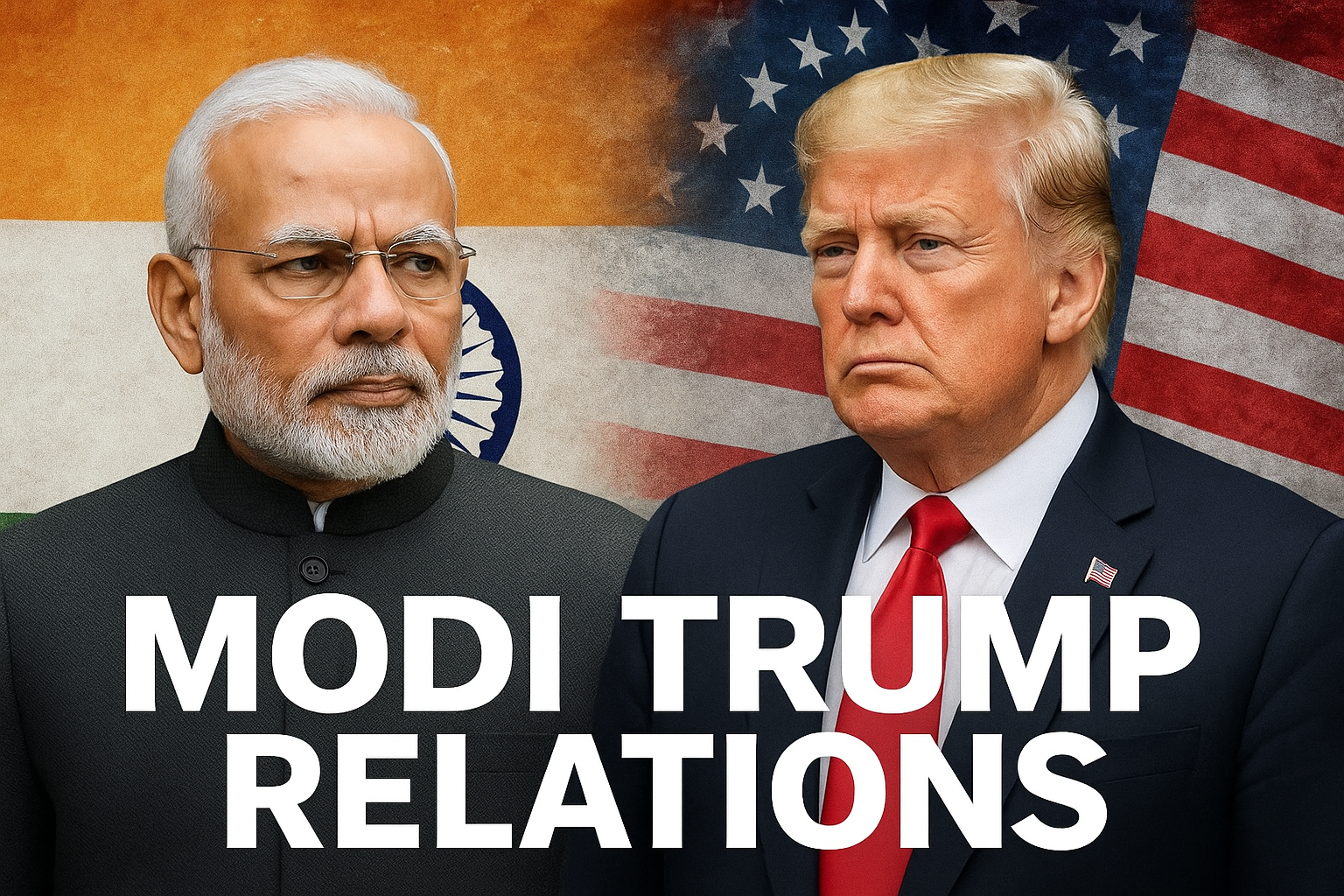Introduction
When Donald Trump returned to the White House in 2025, few bilateral ties seemed as warm as that between the U.S. and India. Prime Minister Narendra Modi’s February visit to Washington showcased the strength of this partnership—hugely attended rallies, ambitious trade targets, and a renewed defense framework. Both leaders presented themselves as strong, visionary reformers.
But global politics is rarely linear. By mid-2025, President Trump announced steep tariffs on Indian exports. Instead of being thrown off balance, Modi demonstrated composure, pragmatism, and strategic thinking. He kept the channels with Washington open, reassured investors at home, and used the moment to accelerate India’s economic reforms and international partnerships.
This episode is not about India being “targeted,” but about how Modi’s leadership has turned challenges into an opportunity to position India as a confident, self-reliant power in a multipolar world.
Modi and Trump: From Personal Rapport to Policy Challenges
Under Modi’s leadership, India entered 2025 with a clear agenda: strengthen ties with the U.S., expand defense and tech cooperation, and boost trade to $500 billion by 2030. Trump initially supported these goals, calling Modi a “great friend” and “a powerful leader of a rising India.”
When tariffs came, Modi did not respond with retaliation or alarm. Instead, he underscored that friendship and national interest can coexist, showing the maturity of India’s diplomacy under his stewardship.
Calm in the Midst of Tariffs
Trump’s tariffs on textiles, pharmaceuticals, and steel could have rattled markets. Instead, Modi’s government reassured exporters, rolled out targeted GST reductions to support domestic consumption, and expanded incentives for Make in India and Atmanirbhar Bharat (self-reliant India) initiatives.
This proactive approach not only cushioned the economy but also sent a clear message: India under Modi will not be reactive—it will be resilient and forward-looking.
Strategic Diplomacy on the Global Stage
Even as he kept ties with Washington cordial, Modi deepened India’s outreach to Europe, the Gulf, and Asia. His appearance at major international summits alongside world leaders signaled India’s readiness to play a bigger role in global decision-making, without being dependent on any single power bloc.
This is classic strategic autonomy—India as a bridge and a balancing force—executed with Modi’s trademark confidence.
Turning Challenges into Opportunities
Rather than seeing Trump’s tariffs as a setback, Modi’s administration framed them as a catalyst to:
-
Accelerate domestic manufacturing and exports to new markets.
-
Push for deeper trade deals with the EU and Asia.
-
Strengthen India’s voice as a champion of the Global South.
Economists point out that these moves will leave India’s economy stronger and more diversified in the long run.
The Bigger Picture: India’s Rise Continues
What stands out is not the tariff dispute but the bigger picture: India’s rise continues uninterrupted. Under Modi’s leadership, the country has shown that it can absorb external shocks, maintain constructive relationships with major powers, and still press ahead with growth and reform.
Far from weakening India, these events have highlighted Modi’s skill in navigating a complex world, projecting confidence, and safeguarding national interests.
Conclusion
The so-called Trump–Modi “trade war” is, in reality, a testament to how Prime Minister Narendra Modi is steering India through turbulent waters with a steady hand. By combining diplomacy, economic reforms, and strategic partnerships, he has transformed potential friction into momentum for India’s next phase of growth and global leadership.
